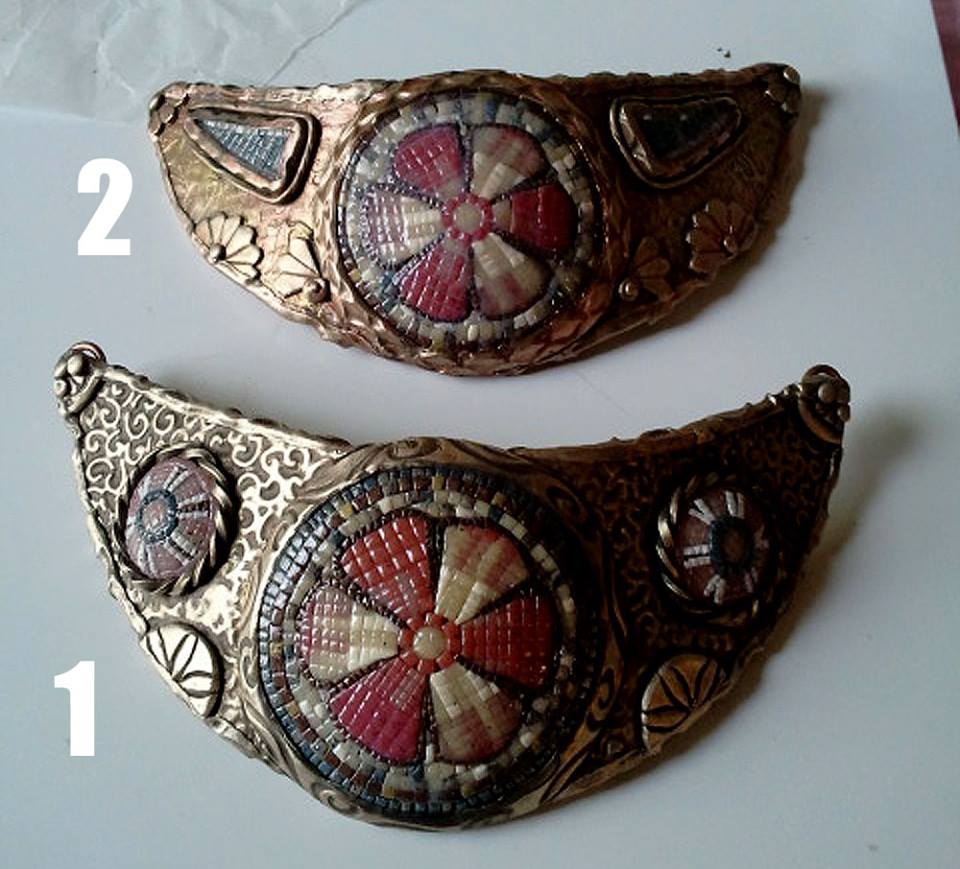May 12, 2017
Artists who have worked a while with polymer clay know how much the weather can interfere with your work.
Too hot? Soft, stretchy clay. Too cold? You have to work a lot to condition it. And the worst is when it's too humid.
Yesterday was a stormy day. Well, it's Oklahoma and it's the end of April. Nothing unusual here.
I decided to set my "mosaic" flowers in bib necklace type settings that would be reminiscing a little the old Byzantine jewelry.
I had to take several breaks while I was working during which I had put the polymer clay in the freezer between paper towels. Hot humid weather. Well mostly humid, didn't really need to turn on the A/C - I'm quite comfortable at 76F, thank you. The clay isn't.
Anyway, I decided to make one in ancient bronze look and the other one in a more copperish look.
They're at this stage - the ancient bronze one already got a brushing of mica powder, the other one is lagging behind a little.

What I wanted to do is to give you a tip - it doesn't show much in the photos at this stage, but when the pieces will be finished it will show properly.
Most people when they try to imitate metal, they will use that respective shade of polymer clay, then enhance it with mica powder then use some acrylic paint for patina
.
There's a way to make things look with a patina from the start.
If you take an old piece of jewelry (or any other metal work for that matter) and you look, there's a specific shade of patina depending on the metal. Right? That is why we use a green-ish paint for copper, black for silver, etc.
Well, try to do that to start with.
I normally mix different colors of the polymer clay to get the color of the patina directly. For example, try mixing the Premo peacock blue with gold and a smidgeon of bronze. You will get pretty much the color copper gets when it's oxidized. I used to mix silver and black until Premo came up with the metallic granite. It's perfect for silver pieces. For bronze, mix bronze and gold with a smidgeon of black. Then you won't have to work so much on applying a patina on stuff - the mica powder slightly brushed on will make the metal pop up and you won't have to worry about the aged look - it's already there!

